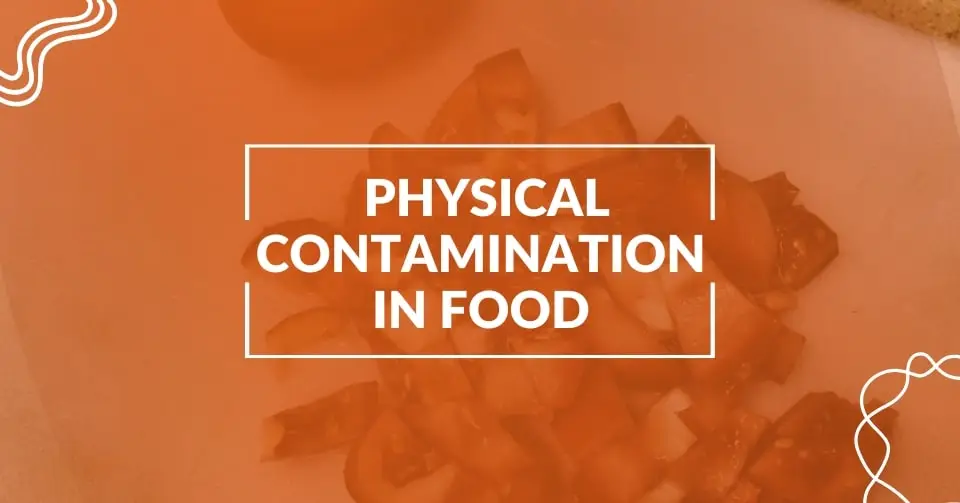The food and beverage industry faces challenges daily. Businesses must proactively identify and address potential problems to stay competitive and ensure consumer safety; otherwise, undesirable consequences can happen.
According to a report by the U.S. PIRG Education Fund, more people in the United States got sick from bloodborne outbreaks in 2024 compared to 2023, and the number of hospitalizations and deaths doubled.
This is where CAPA (Corrective and Preventive Actions) can help prevent tendencies like these. But what exactly does CAPA mean, and how does it influence food manufacturing?
In this blog, I will answer these questions and explore CAPA’s role in food safety and regulatory compliance, the CAPA process steps, triggers, etc. Understanding CAPA will help you approach compliance and operational excellence in your organization from a new perspective.
What Is CAPA in the Food Industry?
CAPA stands for Corrective and Preventive Action. It is a quality management practice that helps identify, address, and prevent product issues and their recurrence.
CAPA includes two key elements:
- Corrective actions that fix already-existing issues, such as food contamination, equipment malfunction, or ingredient mislabeling.
- Preventive actions that are implemented to analyze risks and prevent potential problems in the future.
CAPA is the backbone of any Quality Management System (QMS), helping food manufacturers identify, investigate, correct, and prevent problems affecting quality, safety, and manufacturing performance.
CAPA supports the QMS principle of continuous improvement by improving processes and procedures, preventing issue recurrence, and learning from past mistakes.
Also, an effective CAPA process investigates the root causes of an issue, helping avoid guesswork and prevent the same problem from happening again. You can make traceable and structured records about nonconformances and review the history of actions taken and their outcomes.
Moreover, CAPA significantly reduces operational, financial, and reputational risks by fixing problems in advance so they don’t escalate into recalls, shutdowns, legal issues, and customer complaints.
CAPA integrates deeply with regulatory frameworks like ISO 22000, HACCP, and GFSI standards. By aligning CAPA procedures with these systems, food companies demonstrate due diligence and enhance traceability, which is critical during third-party audits or FDA inspections.
What Triggers CAPA in Food Manufacturing?
Food manufacturers must understand the red flags that mean it’s time to initiate the CAPA process. What must make you say, “We must investigate this and take corrective or preventive action”?
1. Audits and Inspections
To be more specific, I’m talking about issues and nonconformances found during internal and external audits. Once something is found, corrective and preventive action must be implemented to fix it.
2. Non-conformances in Production
Nonconformances and deviations from Standard Operating Procedures (SOPs), critical control limits, or labeling standards can happen at any production stage. For example, there may be temperature abuse, packaging mistakes, undercooked meat, etc.
3. Customer complaints or returns
A customer complaint is a serious trigger for CAPA. If a customer reports food spoilage, an allergen, a physical hazard, etc., you must implement CAPA to investigate the issue.
4. Procedure Changes
Changes in SOPs can be the root causes of new nonconformances, food safety incidents, confusion, and errors. In this case, you should initiate CAPA and find out what went wrong.
5. Data Trends and Recurring Issues
Recurring failures noted in audit logs, service calls, or testing patterns may also trigger CAPA, even if they haven’t caused a major incident yet. Data analytics helps organizations identify early warning signs and take action before nonconformities escalate.
What Are the CAPA Benefits?
It’s a no-brainer that food companies can’t operate properly without a robust CAPA system. But I want to explain more precisely how you can benefit from it.
First, CAPA documentation can directly impact your audit and inspection success. Auditors will check CAPA records to assess compliance and see how well nonconformances were addressed and controlled.
Also, CAPA helps identify and efficiently address the root causes of nonconformances. That’s how you can significantly improve food quality and safety.
Moreover, corrective and preventive actions drive continuous improvement. You switch to data-driven decisions, proactive risk assessment, and efficient problem-solving, which helps you ensure ongoing improvement.
An effective CAPA system also contributes to boosted efficiency and cost reduction, as you will avoid recurring issues, minimize rework, and avoid other disruptions.
CAPA also enhances internal accountability. Organizations build a culture of responsibility and transparency by assigning clear ownership to each action item and setting measurable deadlines. Integrated systems make it easy to monitor task completion and verify effectiveness.
Last but not least, CAPA will help you achieve consistent, high-quality products. For this reason, clients will get back to you every time, bringing you more sales and strengthening your brand reputation.
Essential CAPA Process Steps
Efficient CAPA management requires following some steps. The number of CAPA process steps can differ, and there may be substeps. However, the FDA provides more precision about the CAPA steps; we’ll look at them together.
1. Data Analysis
This step is where you detect existing and potential quality problems by collecting and examining data from complaints, quality audits, service records, and other sources.
2. Investigate the Cause
Investigate the root cause, scope, and impact of found nonconformances by looking beyond immediate symptoms. You must understand the underlying issues related to products, processes, or the quality system.
3. Identify Corrective or/and Preventive Action
At this step, you identify the actions needed to solve the problem and prevent its recurrence. Brainstorm possible solutions and develop an action plan for corrective action (and preventive action if needed).
4. Verification and Validation
Verify whether your plan worked and your actions did not cause other issues. You must also check if the same problems arose after the CAPA implementation. Don’t forget to document verification or validation.
5. Implement Changes
Integrate processes, procedures, or system changes to correct and prevent quality problems. Thoroughly document the changes and ensure they are effectively implemented.
6. Disseminate Information
This step means that the information about quality problems and nonconforming products is spread to relevant personnel responsible for ensuring product quality or preventing the same issues.
7. Management Review
You must submit relevant information about quality problems and corrective and preventive actions to management for review. This is a way to ensure that the management knows the issue and can take further action.
The level of review will depend on the severity of the problem.
8. Document Activities and Results
This one is clear – always keep records of all CAPA activities.
When documenting CAPA, align your reports with ISO 22000 and FSMA expectations. Each record should include the issue, root cause, actions taken, responsible personnel, completion dates, and evidence of effectiveness.
Essential CAPA Tools and Techniques
Some tools and techniques can be helpful when setting up a CAPA process. Check them out!
- Root Cause Analysis — The CAPA process can’t go without RCA and its techniques like the “5 Whys” or Fishbone Diagram. Want to know more about RCA and CAPA? Read our article about how root cause analysis and CAPA improve food manufacturing.
- Failure Mode and Effects Analysis (FMEA) — FMEA helps plan efficient preventive actions. It’s a structured approach to identifying potential failure modes within a process, assessing their impact, and prioritizing them based on their risks.
- Risk Assessment Tools — Tools like HACCP or risk matrices can help evaluate the potential impact of nonconformance and determine appropriate response levels.
- CAPA Templates enable process standardization, so you follow each CAPA step appropriately and don’t miss anything important.
- CAPA Software — CAPA software solution can centralize all your efforts and help you with root cause analysis, risk assessment, document management, audit readiness, etc.
- Key Performance Indicators (KPIs) — Track metrics such as resolution time, recurrence rates, and complaint trends to measure the effectiveness of your CAPA program.
- Feedback Loops — Collect staff and stakeholder input to refine CAPA procedures continuously.
Common Problems in the CAPA Process
Understanding CAPA’s common pitfalls will help you prepare for them and build a more reliable and audit-ready food production environment. Here are some CAPA challenges to be aware of.
- Poor Root Cause Analysis. Superficial root cause analysis undermined the efficiency of the CAPA process. Instead, it will help address the symptoms rather than the actual reason for an issue.
- Lack of Training. Lack of training can lead to teams making mistakes. For example, it can be the reason for poor root cause analysis.
- Lack of Focus on Preventive Actions. A reactive approach is not enough, and overlooking preventive measures is a mistake to avoid. An efficient CAPA system must help analyze trends and risks and prevent potential issues.
- Delayed Nonconformance Resolution. A late response to nonconformance can lead to compliance and safety issues. Delays can often result from manual workflows.
- An overcomplicated CAPA Process can perplex you and make it hard to follow all the steps correctly. Don’t oversimplify the processes, either, as you risk missing important details.
- Miscommunication or a Lack of Communication can negatively influence any project. That’s why ensuring streamlined communication channels is a must.
- Poor Documentation. Recordkeeping of CAPA procedures is crucial as it adds transparency, structure, and effectiveness to CAPA assessments.
Preventing or fixing these issues is possible if you assign clear responsibilities, maintain documents, track deadlines, etc. Regular checks also help monitor CAPA performance.
CAPA management software is a solution that can help with each of these aspects, from root cause analysis to communication. A centralized, automated system will become a game changer as it will help you coordinate all your CAPA efforts, assign tasks, communicate with teams, digitize CAPA records, and more.
CAPA Example in Food Manufacturing
To better understand the CAPA process in practice, let’s look at the example of a cross-contact incident in a mid-sized bakery. I want you to show how you can promptly handle a nonconformance and turn it into an opportunity for continuous improvement.
The bakery produces nut-containing and nut-free cookies, but one day, they received a customer complaint. A client had an allergic reaction to a “nut-free” cookie. The incident involves a serious food safety risk and a potential labeling violation, which is why it triggers CAPA.
The quality team started with a root cause analysis. They reviewed production procedures and interviewed the staff. Bingo! They discovered that the same baking tray was used for nut and nut-free products without proper cleaning between batches.
This deviation from the Standard Operating Procedure (SOP) led to cross-contact. Now, it’s time for corrective action.
All employees received refresher training on allergen control protocols and cleaning procedures. The SOPs were updated and now include equipment segregation for allergens and allergen-free products. Supervisors also began conducting spot checks to ensure allergen controls were followed during production.
The bakery took a proactive approach as well and implemented preventive actions, including:
- Color-coding of utensils and trays to use separately for allergen-free and allergen-containing products;
- Visuals in production zones to remind staff of allergen risks.
- Regular training to spread allergen awareness and develop good manufacturing practices.
The bakery documented all CAPA activities in the QMS, mentioning responsible personnel, timelines, and follow-up actions.
The team ran a mock recall to verify that the new allergen controls were working as intended. Later, the internal audits confirmed the changes were successfully integrated into daily operations.
As a result, the bakery implemented a structured CAPA process that helped them avoid further customer complaints. The issue was resolved quickly, efficiently, and transparently, boosting both product safety and brand reputation.
CAPA is not only about fixing problems; it’s also about building a safer, more compliant, and more resilient food production system. By addressing root causes and future risks, manufacturers can enhance operational performance and deliver safe products to their customers.
Streamline CAPA Management With FoodReady AI
Delegating CAPA to a digital solution can become your best decision as it alleviates the struggle of manual work, delays, cumbersome paper documentation, etc. FoodReady AI can become your companion and significantly streamline your CAPA processes.
Our AI-powered platform helps you manage non-conformances, internal audits, and customer complaints in one system. We will help you handle recalls efficiently in minimum time and implement corrective actions to avoid recurrence.
With our customizable HACCP templates, you can cover corrective actions as part of your HACCP plan. It also saves you time to focus on the tasks requiring more attention.
By the way, we do not only help food and beverage businesses. Food packaging companies can also implement corrective actions with FoodReady, just like Munot Plastics, which produces plastic packaging for food businesses.
We supported them in their SQF audit, which they passed with minor non-conformances. FoodReady helped implement corrective actions, and now Munot Plastics is an SQF-certified facility.
With our AI-powered platform, we can help you build and manage your CAPA plan. Book a demo to learn more!
Conclusion
In the highly regulated and dynamic food and beverage industry, food businesses must quickly respond to quality issues. This makes CAPA not only a regulatory requirement but also a strategic solution.
By implementing CAPA with profound root cause analysis, corrective and preventive actions, and well-maintained documentation, you achieve regulatory compliance, improve product quality, save time and money, and win customer trust.
Technological advancements like FoodReady AI can help you manage CAPA. You can use the software to automate and streamline recordkeeping, centralize records, save time, reduce costs, and deliver safe and quality food every time.
If you are eager to turn your CAPA process into a competitive advantage, book a demo with FoodReady AI and discover how we can support you!
FAQs
CAPA is necessary when the nonconformance is systematic, when there are customer complaints, and when the issue significantly affects the product quality. One-time, minor, isolated, and low-risk issues shouldn’t trigger the CAPA process.
CAPA is essential for different branches of the food industry, including manufacturing, shipping, distribution, packaging, etc.
Food manufacturers must implement CAPA for FDA compliance and adhere to GFSI standards like SQF or BRCGS.
Small businesses can adopt simplified CAPA procedures using root cause analysis tools and CAPA templates. Another option is adopting a software solution.
In this case, risk assessment helps prioritize CAPAs based on their impact on food safety, regulatory risks, and likelihood of recurrence.








